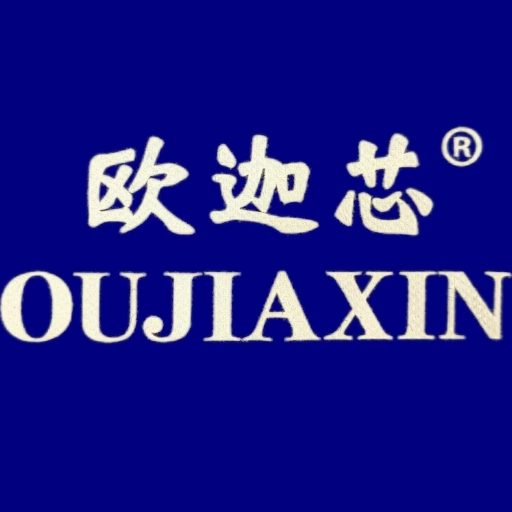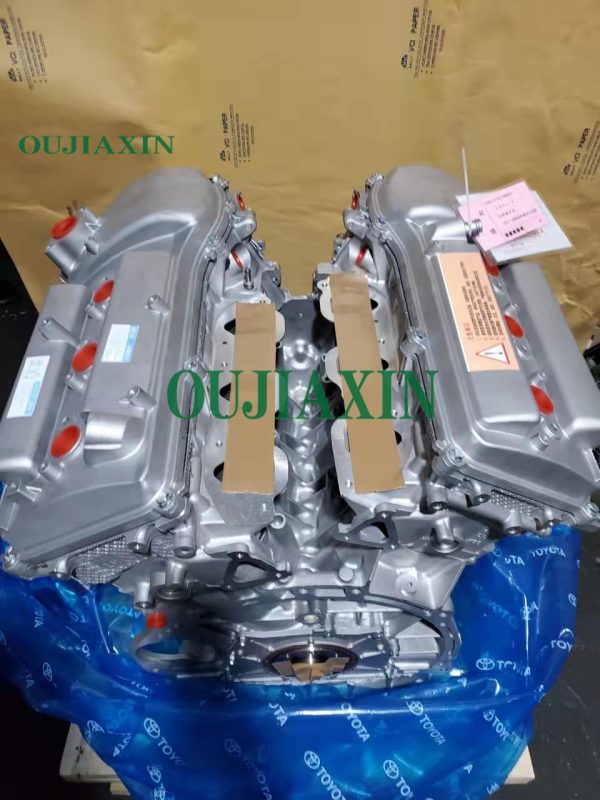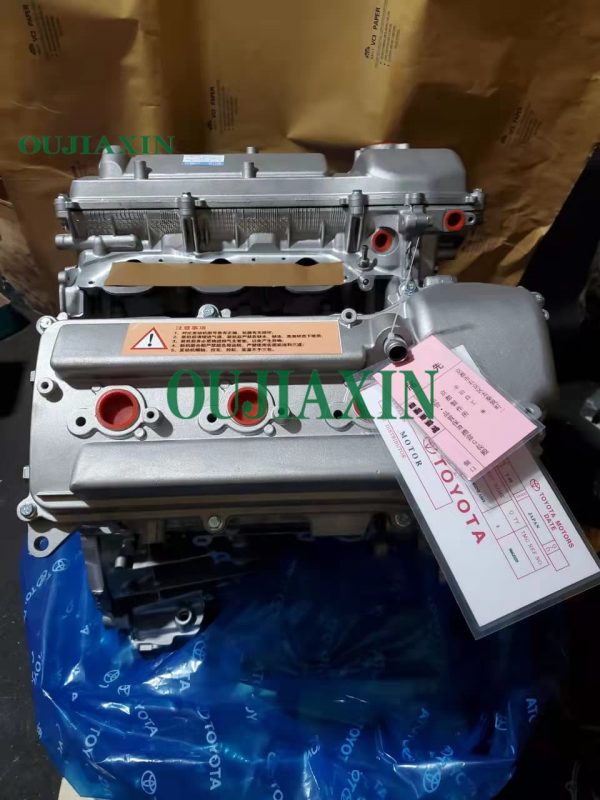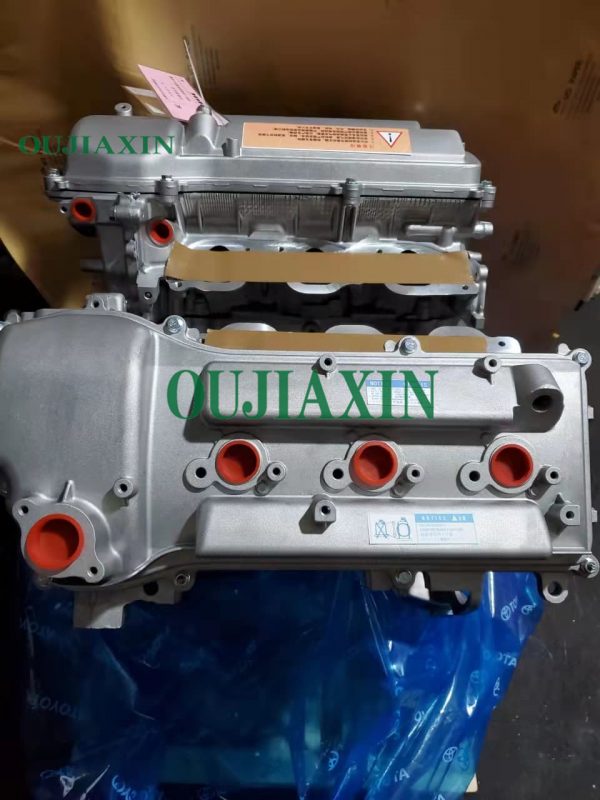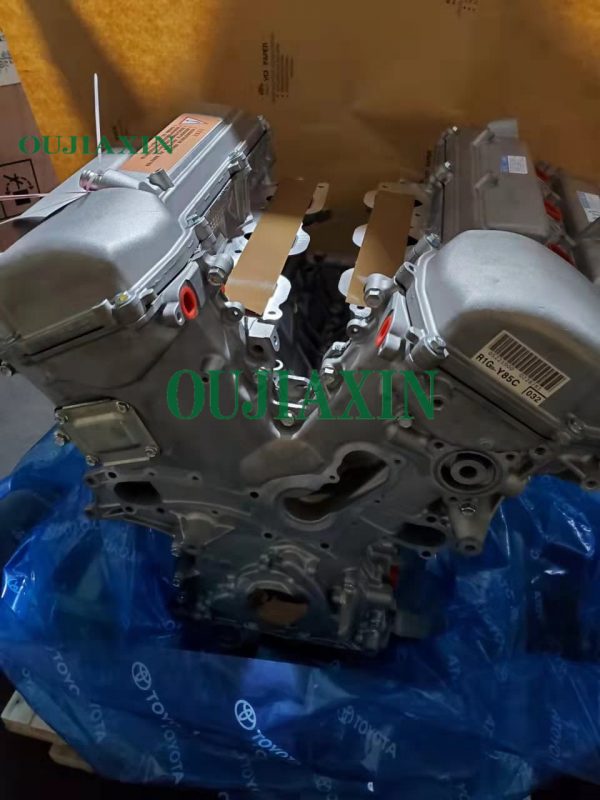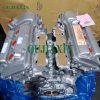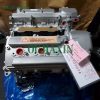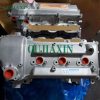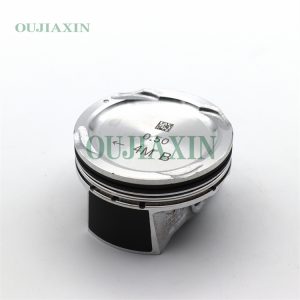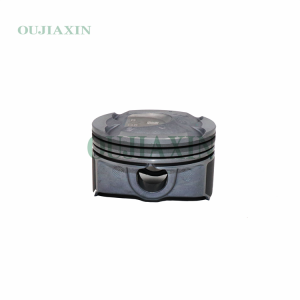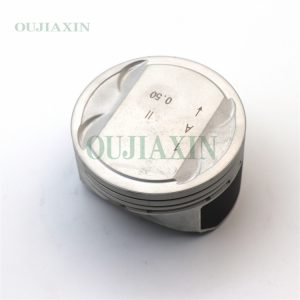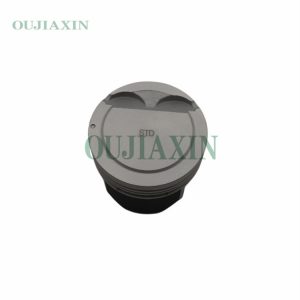Engine is suitable for Toyota series 1GR (new )
Engine performance. It uses a cast iron cylinder block and aluminum cylinder head to provide good heat dissipation performance, a 3.5-liter displacement, a maximum output of 270 horsepower, and reliability and durability. Known for its reliability and durability, the engine uses high-quality materials and advanced manufacturing processes to ensure the engine’s durability and stability, such as a steel cast crankshaft and aluminum pistons, as well as one-piece cast connecting rods. rod and piston, reducing friction and vibration.
Description
1GR-FE: The 1GR-FE is 4.0 L (3,956 cc) with a bore and stroke of 94 mm × 95 mm (3.70 in × 3.74 in). Output is 237 hp (240 PS; 177 kW) at 5200 rpm and 266 lb·ft (361 N·m; 37 kg·m) of torque at 4000 rpm, tuned to 87 octane. 240 hp (179 kW; 243 PS) at 5200 rpm and 278 lb·ft (377 N·m; 38 kg·m) at 3700 rpm when tuned to 91 octane. The engine features Toyota’s VVT-i intake cam variable valve timing system with a compression ratio of 10.0:1.
First-generation 1GR-FE models equipped with single VVT-i featured Toyota’s Acoustic Control induction system. The system consists of a baffle dividing the intake manifold into two parts and an intake control valve (located on the baffle) that controls its effective length. When the engine is running at medium speeds and high loads, the actuator closes the intake control valve to increase the effective length of the intake manifold. Under other operating conditions, the intake control valve opens to reduce the effective length of the intake manifold.
Applications of VVT-i (calendar year):
2002–2009 Toyota 4Runner / Hilux Surf (GRN210/215)
2007–2011 Toyota Land Cruiser (GRJ200)
2002–2009 Toyota Land Cruiser Prado (GRJ120/121/125)
2004–2015 Toyota Tacoma (GRN225/245/250/265/270)
2005–2015 Toyota Hilux (GGN10/20)
2005–2006 Toyota Tundra (GSK30)
2006–2009 Toyota Tundra (GSK50/51)
2005–2015 Toyota Fortuner (GGN50/60)
2006–2009 Toyota FJ Cruiser (GSJ10/15)
2009-present Toyota Land Cruiser 70
2015 to present Toyota Hilux
Dual VVT-i Applications (Calendar Year):
2009-Present Toyota 4Runner (GRN280/285)
2009–2022 Toyota FJ Cruiser
2011–2014 Toyota Tundra (GSK50/51)
2012–2021 Toyota Land Cruiser (GRJ200)
2021-Present Toyota Land Cruiser (GRJ300)
2012–2023 Lexus GX 400 (GRJ150)
2015 to present Toyota Fortuner
2009–2023 Toyota Land Cruiser Prado (GRJ150/150R/155)
Other models:
2GR: 2GR-FE: The 2GR-FE is 3.5 L (3,456 cc). Bore diameter remains 94 mm (3.7 in); but travel is reduced to 83 mm (3.27 in). Reported output varies by vehicle application, but is approximately 270 hp (201 kW; 274 PS) to 314 hp (234 kW; 318 PS) at 6200 rpm, 248 lb·ft (336 N·m) to 260 lb·ft ) (353 N·m) torque at 4700 rpm, 87 octane (R+M/2). This version features Toyota’s Dual VVT-i variable valve timing system on the intake and exhaust cams. The cam is driven using a timing chain.
Application (calendar year):
2005–2012 Toyota Avalon (GSX30)
2012–2018 Toyota Avalon (GSX40)
2006–2012 Toyota Aurion (GSV40)
2012–2017 Toyota Aurion (GSV50)
2005–2012 Toyota RAV4/Vanguard (GSA33/38)
2006–2019 Toyota Estima/Previa/Tarago (GSR50/55)
2006–2011 Toyota Camry (GSV40)
2011–2017 Toyota Camry (GSV50)
2006–2012 Lexus ES 350 (GSV40)
2012–2018 Lexus ES 350 (GSV60)
2007–2009 Lexus RX 350/Toyota Harrier (GSU30/31/35/36)
2009–2015 Lexus RX 350 (GGL10/15/16)
2007–2016 Toyota Highlander/Kluger (GSU40/45/50/55)
2007–2012 Toyota Blade Master (GRE156)
2007–2013 Toyota Mark X Zio (GGA10)
2008–2015 Toyota Alphard/Vellfire (GGH20/25)
2015–2017 Toyota Alphard/Vellfire (GGH30/35)
2008–2016 Toyota Venza (GGV10/15)
2020–2023 Lexus LM 350 (Hong Kong only)
2009–2021 Lotus Evora (280 PS (206 kW; 276 hp) and 350 N·m (258 lb·ft) with Lotus engine management, Sport Pack redline increased to 7000 rpm)
2007–2016 Toyota Sienna (GSL20/23/25/30/33/35)
2009 to present Bolwell Nagari 300
Toyota Corolla (E140/E150) (used in Super GT)
Lotus Evora GTE (modified 4-liter version, 470 hp (477 PS; 350 kW) NA, used in ALMS and 24 Hours of Le Mans)
